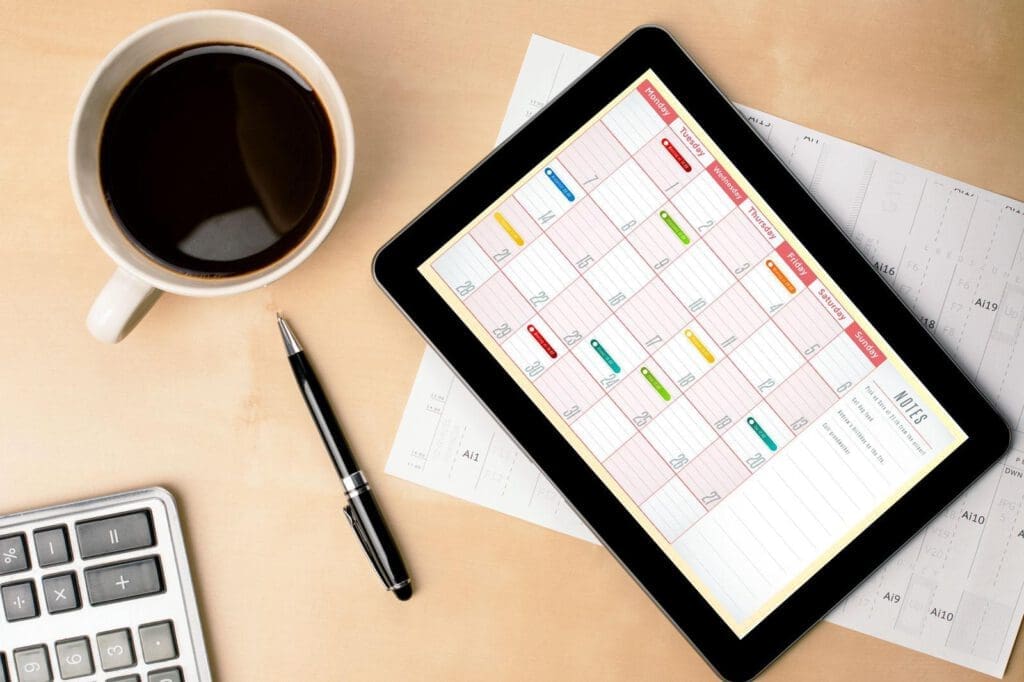There are many issues that face the project manager. One of which is to set project management milestones. Working towards specific goals throughout the lifecycle of a project makes sure that everyone is pulling in the same direction and standards are achieved. But what do these project management milestones look like? What goals can be set for a project team?
What is a milestone in project management?
In project management, a milestone is a marker that signifies a change or a stage in the development and completion of a project. Powerful components they will show key events in a project plan, providing a pathway for moving the project forward.
Essentially, milestones act as signposts in the course of a project, helping you and your project team stay on track. Without these milestones, you are simply monitoring tasks without knowing if you are on the right path or not.
But they do more than simply show how progress (or not) you are making. They can help communicate what is happening to your team and to stakeholders too.
Quote often, milestones and tasks can be confused but it is important to know the difference.
What is a task and what is a project milestone?
It’s easy to confuse a task with a milestone simply because the feeling of completing a task can lead to you, and your team, to believe that a key stage of the project has been completed. But on larger projects, it can be almost impossible to separate the two and so before we go on to examine common project milestones in more depth, let’s define what is a project milestone and when is it a task.
To distinguish between a task and a milestone in your project plan, you need to ask yourself these questions:
- Is it a task or a deliverable?
- Will it impact on the final deadline
- Is this an important stage or moment in the project that indicates it is moving forward?
- Does it need to be reviewed by stakeholders?
- Is this an event that impacts on the project?
As the project manager, you want and need to make the most of important events so that your team can see them clearly mapped out on the project plan. Milestones have extra significance above and beyond tasks and so when you answer the above questions, you are distinguishing between a task and a milestone. Tasks are the tools that contribute to reaching the milestones set for your team and for the project.
What should project milestones look like?
It is easy to assume that the bigger, more dramatic the milestone or goal is, the better. A milestone that seems just out of reach at the start of the journey can be a huge motivator for teams, especially if steady progress is being made towards it.
But larger, almost-unreachable goals can be too big a step for a project management team to reach and whilst ambitious goals have their place, many seasoned project managers would agree that smaller, within-their-grasp milestones work better.
This is for two reasons;
- Your project team won’t feel that they have too big a mountain to climb – smaller, more frequent wins are better than a long stretch of time before there is a chance to celebrate how well the project is being delivered.
- Smaller goals and ones that are closer together on the timeline of the project can also be more efficient in serving the purpose of measuring how on-track the project is.
Thus, the lesson is simple: the less dramatic the milestone, the better. ‘Smaller’ goals are just as important as the bigger key features of a project but still ensure that a project runs along at a decent pace and with minimal stress.

Unique industries, similar project milestones
Project managers work across a range of industries including the field of engineering, construction, technology, financial services, healthcare and the law. It is not uncommon to find project managers within larger projects for national and local government too.
Whilst there is no denying that these are unique industries that can bring their own unique set of challenges when it comes to project management, project goals and milestones are, in the main, very similar.
And this is why you are likely to find the following ten project goals and milestones across a range of projects and across a range of industries;
1 Design approval
Prior to the design process, your client will need to be aware of expectations for the project, the estimated number of revisions and the hours it will take. With this simple explanation of what is being done, when and why, the client will feel a greater sense of confidence as each step of the project is completed.
By keeping stakeholders involved from the beginning, as the project manager, you will make it easier to get feedback throughout the process. And that means a win-win for your team as they meet and pass the design approval goal much more quickly.
2 Funding
With design approval in the bag, the next common milestone across projects is to talk figures. Or, more precisely, to discuss the funding of the project.
Funding requirements for a project are usually determined in the cost baseline and then split across the multiple phases of the project. As well as the level of funding, you’ll also need to know where the funds are coming from.
It is not uncommon to find funding goals set as part of a project, a handy reminder to the project team just how well the project is progressing.

3 Hiring personnel for specific positions
Third on the list is an important one, a signal that the project is now in full swing. Hiring people for key roles is a project milestone that is an exciting step forward.
It is rare to have everyone in place at the very beginning of the project as certain things need to be discussed and planned prior. Identifying staffing needs is one such factor and with approval and funds in place, the project manager can now begin the process of advertising positions and finding the right people with the skill set needed to fill the role.
Tracking the hiring process presents a significant boost to a project. And with people in place, the project can be shifted up a gear.
4 Vendor contracts
No matter which industry the project is part of, they all share one commonality – and that is, the use of external vendors.
Like hiring people with specific skills, hiring vendors to complete certain sections and phases of a project is an exciting one. But like finding the right people, it can be a time-consuming and detailed process.
Finding vendors who are the best fit for your project require extensive market research, a task that project managers will take seriously. Finding vendors who and do deliver the services or products they need on time and on budget is crucial to the success of a project.
With needs identified and proposal requests sent out to various vendors, their responses will need to be evaluated. When vendors are in place, another important project goal can be ticked off the list.
5 Communication updates
Halfway through the list and we reach the milestone of communication updates. Part of the project planning process is to put in place a communication plan. this will allow everyone, stakeholders especially, to be kept up to date throughout the process.
Standards will need to be set and a timeline of when clients will be notified of project timings, budget updates and any upcoming needs. Setting communication channels in place allows for feedback to flow back to both the project manager and the project team, an essential tool in preventing unnecessary issues from arising.
 project management requirements” class=”wp-image-418″/>
project management requirements” class=”wp-image-418″/>6 Reaching KPIs
Key Performance Indicators (KPIs) are measurable goals that assist both the project manager and their team to monitor and measure the overall performance of a project.
Again, this is a common project goal across industries and can include indicators such as actual cost run or return on investment (ROI). Typically, KPIs cover five broad categories:
- Financial – monetary or financial measurements are common throughout the life span of a project
- Quantitative – this is where financial metrics may not be necessary but another quantified metric is
- Qualitative – not all KPIs need to numerical in nature and when this is the case, they are known as qualitative KPIs
- Process – a KPI that evaluates the processes employed in a project can be used to assess efficiency
- Team performance – measuring a project team’s strength and its ability to deliver on the project is also a form of KPI that can provide important information.
Whatever the specific KPI is, it needs to be actionable and straightforward but also have a means by which success can be measured and quantified.
7 Release product sample
For some projects that involve creating a tangible product, the release of a prototype or sample for testing and reviewing will signal a significant milestone in a project. It is, effectively, the process by which the project team lay open the project to important stakeholders and followers.
Testing is not without its challenges but is key to getting the right product to market. Being able to identify flaws in design or manufacturing is one key aspect. But testing and reviewing can also place the spotlight on problems and issues that until now, had not been thought of or were apparent.
Once the design process has been finished, setting a date for the release of a prototype or sample is an important milestone for any project team.
8 Testing phases
Similar to sampling and the release of prototypes, the testing phase in construction or engineering projects is an important milestone.
This is when all systems are checked including electrical, IT and security. It is possible to set single milestones for each of these, a process that can help the project team to remain focused but also as a means of ensuring that any challenges or issues are identified but, just as important, that solutions are actioned.
9 Fixing defects
The penultimate milestone on our list is what some projects may refer to as snagging. Closely linked to testing prototypes and testing phases, if defects are detected, they need to be adjusted or repaired.
For example, deficiencies in design, material or workmanship could be identified and before the project can be signed off as complete, will need to be rectified. Some defects can be obvious but others remain hidden. In fact, some defects can remain hidden for years after the completion of a project.
For the project management team, identifying and rectifying defects is a key milestone not just in its own right but because it signals that the end is in sight…
10 Project completion or approval
It is the most obvious milestone and the one that is the ultimate goal for any project. All the others on the list are steppingstones for reaching the final destination of a project – and that is the overall completion of the project to the satisfaction of the clients and stakeholders.
With the communication updates sent, the testing phase completed and defects fixed, the final approval will mark the end of the project.
With the final project report completed, the project is now complete with the team moving on to new challenges.

